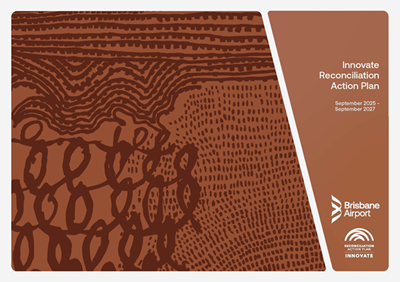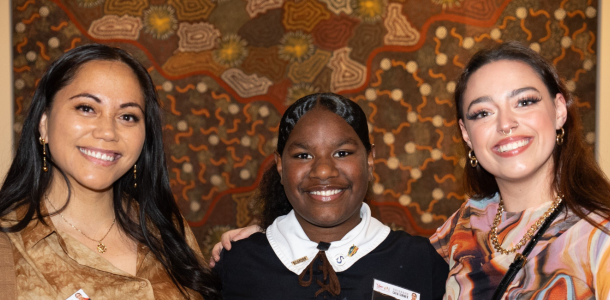At Brisbane Airport Corporation (BAC), we are committed to the ongoing process of reconciliation and understanding the Indigenous heritage of the land on which we operate.
We respectfully acknowledge the Turrbal and Yuggera peoples, the Traditional custodians of the land on which BAC operates, and pay respects to their Elders past, present and emerging.
Reconciliation Action Plan
The Reconciliation Action Plan sets out BAC's commitment to working towards the achievement of genuine and sustainable reconciliation between Australian Aboriginal and Torres Strait Islander peoples and the wider community. Through our actions and efforts, we aim to contribute meaningfully to Closing the Gap and to reduce disadvantage among Aboriginal and Torres Strait Islander peoples.
We are proud to formally commit to reconciliation through our Reconciliation Action Plan that aims to celebrate and promote the traditions, laws and customs of Aboriginal Torres Strait Islander peoples. It is core to how we work towards building relationships, respect and trust with our First Australians.

Brisbane Airport Corporation became a member of Supply Nation in 2018 in an effort to increase procurement of goods and services provided by Indigenous-owned businesses.
Supply Nation is Australia's only supplier diversity council that promotes the purchase of goods and services supplied by economically excluded and marginalised groups including Indigenous Australians. BNE was the first airport in Australia to have a Reconciliation Action Plan and to be a Supply Nation member.
Dreaming Tracks and Dreaming Sites are an integral part of the Aboriginal people’s connection to country (the land-people relationship). Embedded within the Dreaming Tracks and Dreaming Places is the belief system, which regulates what a person should or should not do. Under Turrbal traditional laws and customs, laws are kept in songs, stories and dances, and are passed down from one generation to the next.
Brisbane Airport and surrounds are largely associated with the Maiwar (Brisbane River) Dreaming Track and the wider Brisbane Riverine catchment (wetland, floodplains and swamps); as well as the Ballum Di Dreaming Song; and Murukutjin (Black Swan) Dreaming Track.
Ballum Di is a Brisbane River song that underlines the significance of the riverine system and its connectivity to other places and sites, in particular, to the Maiwar and Murukutjin Dreaming Tracks. It is a dreaming song that connects particular places and locations along the Brisbane River. This song further connects other places of spiritual significance in south-east Queensland to form Dreaming Tracks – a regionalised network of beliefs and value systems within the wider, regional system.
The significance of Ballum Di to the Brisbane River is comparable to the significance of the Legend of Maroochy/Murukutjin to the Maroochy River and Coolum. In view of the intangible nature of the Dreaming Tracks it is difficult to measure potential impacts on their values. Under Aboriginal laws and customs, places like Brisbane Airport remain culturally and spiritually significant to the Turrbal people irrespective of any developments which may occur on the land.
A bora ring (ceremonial ground) is reported to have existed at Brisbane Airport, near the suburb of Pinkenba, and would have been used prior to and immediately after European settlement in the 1820s. Another bora ring existed over 1km away at Pinkenba, in the location of the present Brisbane Portuguese Club. Both sites were later destroyed by European settlers without the consent of the Turrbal People.
Bora rings were often located in the vicinity of creeks or permanent waterholes, where game and other resources were sufficiently plentiful to support people during ceremonies. The existence of these sites suggests that this area would have been used by the Turrbal People for gathering and corroboree due to the existence of freshwater swamps, floodplains and wetlands in the area.
In Turrbal Country, bora rings were earthen. Earthen bora rings were created by digging soil from within the centre of the circle using sticks and stone artefacts and carrying it to the outside, forming a mounded edge.
Transient camps were known to occur on the beach at the mouth of Serpentine Creek at Cribb Island and another at the former rafting yards at Serpentine Creek. Another transient camp existed at Myrtletown on the edge of Boggy Creek (Tumkaiburr). According to an early missionary at the Zion Hill Missionary in Nundah, the Boggy Creek camp site was occupied by the Bribie Island clans at Easter time each year.

